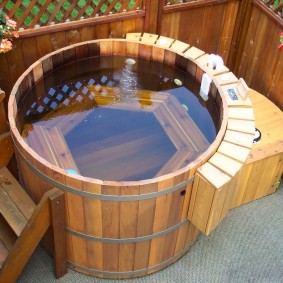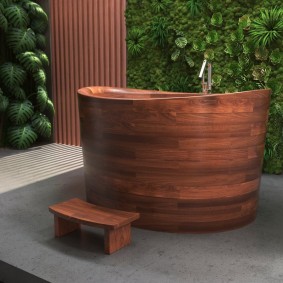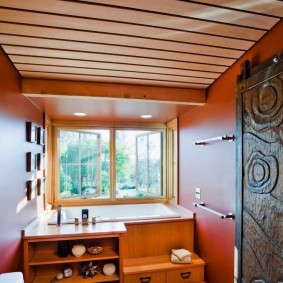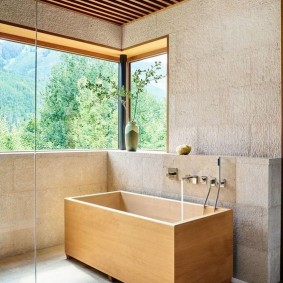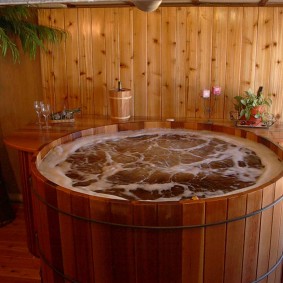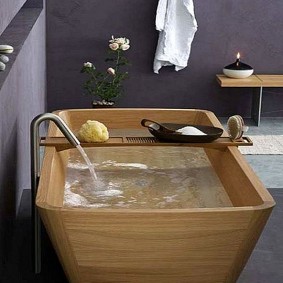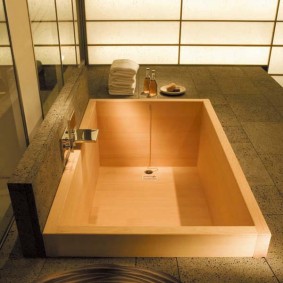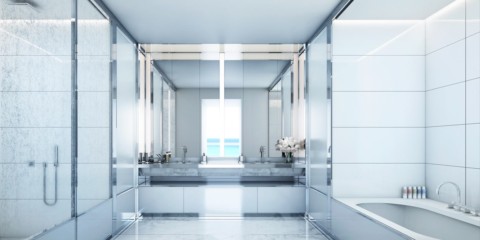 A bathroom
Stylish and versatile bathroom design in black and white
A bathroom
Stylish and versatile bathroom design in black and white
Despite the fact that the Japanese style in the interior has always been popular, today its traditional interpretation is in fashion. This means that in the West they began to reproduce oriental traditions in the arrangement of housing. Japanese-style bathroom design with authentic elements is very popular.

The bathroom is a holy monastery in which you can clean not only the body, but also the soul.
Features of the Japanese bathroom
Content
Japanese homes have a small area, due to the culture and history of the people. It was in Japan that minimalism arose, since in the conditions of constraint people learned to do small. The bathroom was also furnished in a minimalist style. Instead of the familiar full-height bathtubs, they used wooden barrels or special wooden containers that were built into the floor.
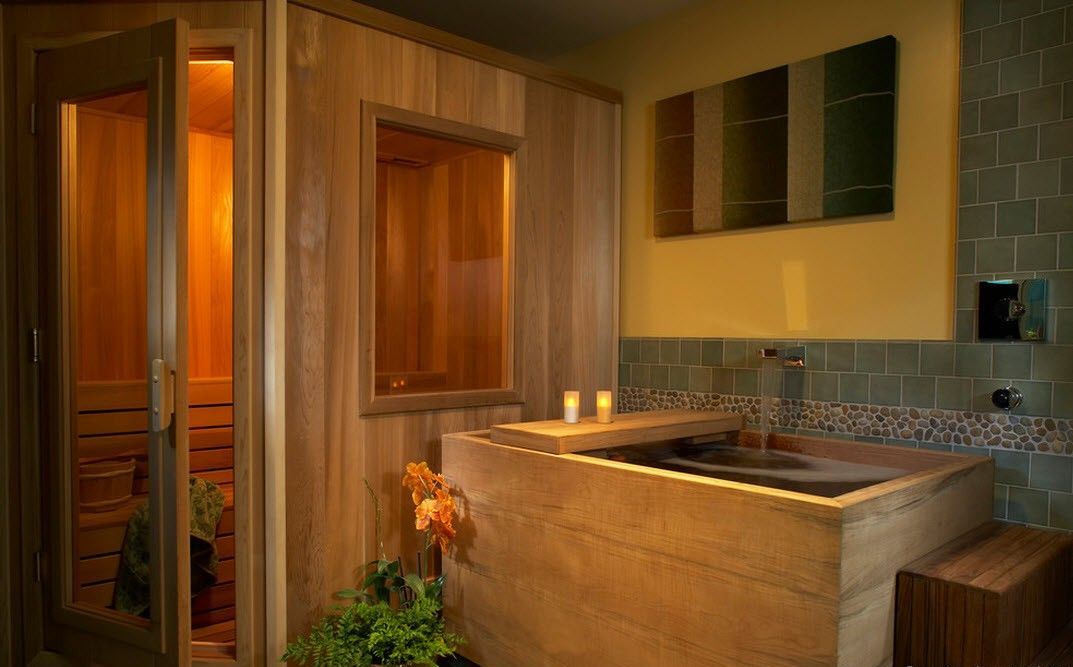
We come back here every evening, after a hard day's work, to absorb the fullness of the relaxing and rejuvenating effect.
Today, real wooden barrels are still part of the Japanese bath, but floor baths are often used in modern interiors.

This room can not only save you from endless noise and fuss, but also give a charge of vivacity for the whole day.
There is nothing superfluous in the Japanese bathroom. Here, a person performs hygiene procedures, resting from a working day, and therefore nothing should distract him.

Exquisite Japanese-style bathroom.
Most often, the room is sheathed with wooden or bamboo panels, but today you can use materials that mimic them, for example, laminate. The color scheme is in warm, natural colors, diluted with red and black.
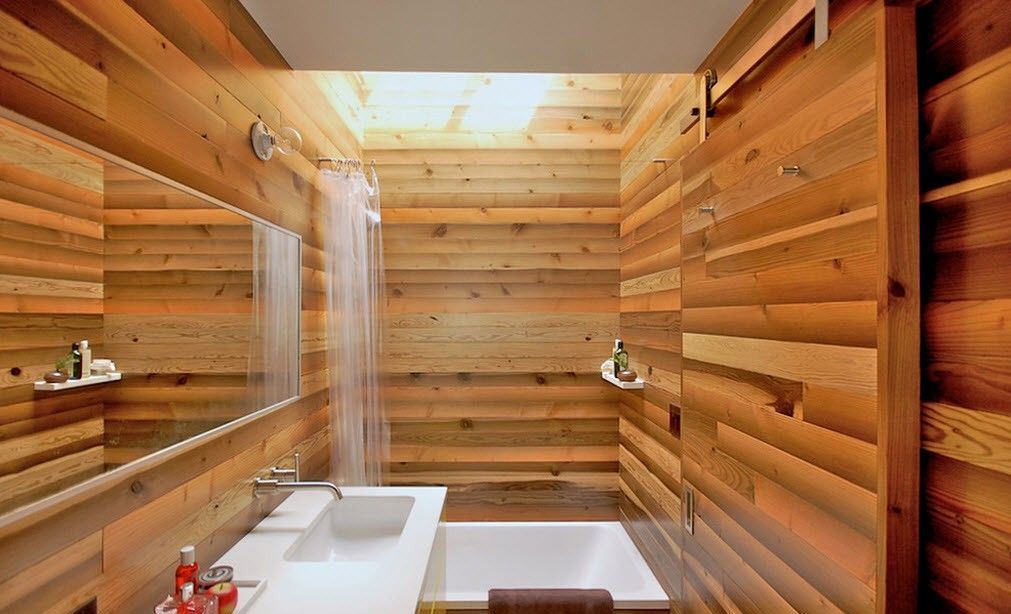
The beauty and splendor of the Japanese interior lies in its minimalism and simplicity.
Important! To create an authentic atmosphere, use all shades of brown in the design, avoid color contrasts that make the design restless, distracting, colorful.
The layout of the Japanese bathroom
The Japanese rarely see the combined bathroom in the apartment. The classic bathroom in Japan is separate from the toilet. When planning an oriental design in your own home, think of a way to separate the two rooms, perhaps with a symbolic partition or screen. Separation of the bathroom is associated with a hygiene culture that triumphs in Japan. Here, bathing is a whole art that has been created for a century.

Ergonomic design is able to harmoniously combine natural motifs and modern amenities.
The specificity of the culture determines the layout of the room itself. The traditional Japanese-style bathroom includes a shower and a deep, square wooden bathtub that is built into the floor. This design allows you to keep warm for a long time. To minimize heat loss, half of the bath was covered with a lid.
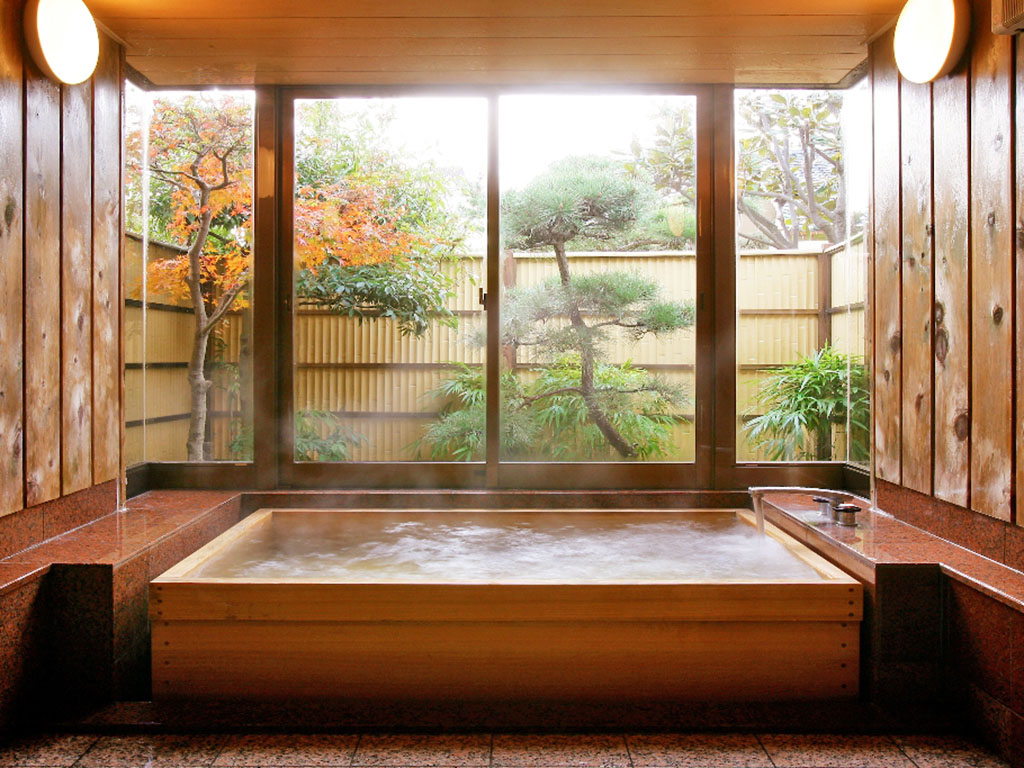
Japanese style inspiration.
Modern rooms look different - they often have a shower and countertop with a sink - an echo of ancient times, when a vessel with water was simply placed on the table.

If you have enough space, then the bathroom can conveniently fit into the overall design of the house.
In small apartments, you have to choose between a shower and a bathtub, and to reproduce the Japanese style, it is recommended to choose the second option.

Pay attention to the use of stairs as a stylish and fashionable accessory for storing towels.
Japanese bathroom design
The main feature that distinguishes the eastern interior from the western is minimalism, which here does not look cold and uninhabited, but rather seems warm and cozy. The secret is not so much in the layout as in the choice of design materials. The Japanese use natural stone, wood, bamboo to achieve a feeling of warmth and unity with nature.

An excellent choice would be to use natural wood in the design.
Design Features:
- concise lines;
- the predominance of geometric shapes;
- lack of pretentiousness, decor elements;
- daylight;
- the use of natural materials;
- warm colors.

If the main purpose of this room in your house is a place for relaxation and beauty treatments, then why not design it in the style of a SPA salon.
The key element in the room will be a Japanese bathtub, which differs from the European one not only in location and shape, but also in placement.

Glass shower, wooden benches and a huge number of terry towels will be relevant.
When designing a room drawing, be sure to plan the podium into which the traditional bathtub will be built. Without this element, the design is unlikely to be authentic, and therefore a small podium should be provided, which is usually placed in the back of the room.
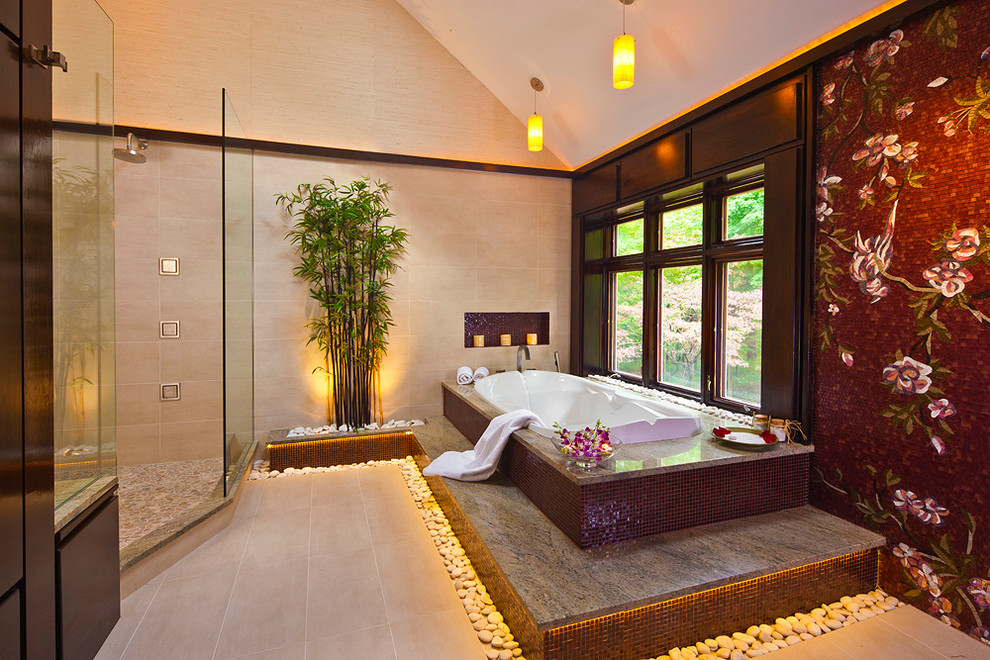
Japanese-Style Room with Oval Pebble Bath and Black Granite
For wall sheathing, natural wood panels, brown tones, stone or laminate are used. Organic combinations of brown and white, as well as their combination with black. All three colors can be harmoniously used within the design of one room. Black tiles are ideal for floors, wooden siding for walls, and white for plumbing.

To achieve the result, it is enough to adhere to several general trends.
Furniture and plumbing is better to choose a hinged - such models look modern and are suitable for Japanese design. A sink on a wooden countertop, a hanging cabinet and a bathtub mounted on the floor - there is nothing superfluous in the Japanese design.
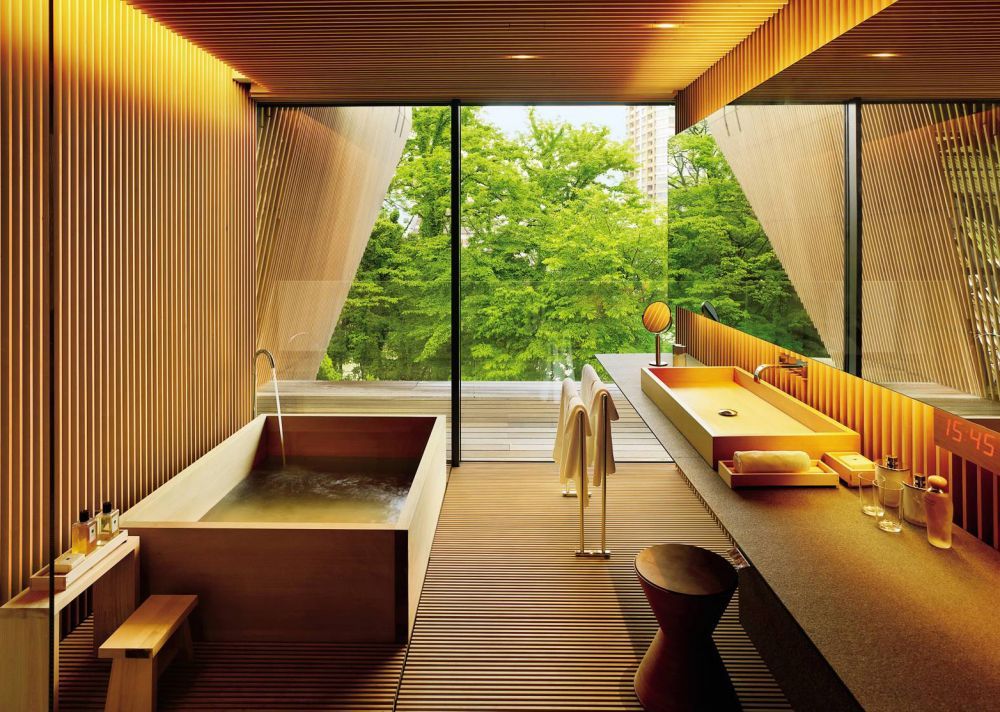
Japanese-style ultra-minimalism is truly amazing.
In a room of a large area, you can use a screen for zoning the space. In a small one, it is advisable to do without even a shower curtain, which will look too European.

You just look, it looks just great!
Accessories and decor are also recommended for use in a large room, as they can overload a small room.

No need to try to dilute the design with bright decor; give preference to calm tones when it comes to the bathroom.
Note! If there is no way to organize a real Japanese bath, then get a model that resembles the traditional ofuro as much as possible.
Types of Japanese baths
Today, two main types of bathtubs are known in Japan: furaco and ofuro. They differ in form and purpose. A traditional wooden bathtub, which is essentially a kind ofuro, is singled out as a separate item.

As you know, the basic rule of Japanese design is strict minimalism.
Furaco
Many people know that in Japan, bathtubs were made of wood. This tradition appeared in ancient times and is still relevant today. The bath can be round, square, rectangular or oval.

If the bathroom is large enough, the perfect solution is to equip a traditional Japanese bathroom.
Furaco is a large barrel, in which it is customary to swim in hot water. Furaco in its original form is used in baths and fonts. It can be installed in private homes, cottages, cottages. In an apartment, furaco is unlikely to look organically because of its size and the features of water heating.

Alternatively, you can use cedar - similar properties are complemented by a wonderful aroma.
Ofuro
Today, the term ofuro is called any bath in Japanese or similar style. Initially, ofuro meant the wooden bathtub built into the floor, into which they plunged on the shoulders. Today, ofuro is made not only of wood, but also of other materials, including modern, technological ones. The only feature that has survived to this day is that the bathtub has a square shape, less often a rectangular shape, unlike furaco, which is made in a round or oval shape.

Ofuro is a wooden Japanese bathtub made from hinoki wood.
Today you can easily find a suitable model ofuro to install it in an apartment or private house. This term refers to any rounded, streamlined high bathtub or low, square, which is installed on the podium.

Any of the constituent design elements in creating the composition matters.
Wooden
Initially, the Japanese wooden bath was a hinoki wood product, which is characterized by antibacterial properties, mold and rot, and insects do not start in it.

In the Japanese style, to achieve harmony, they use various calm tones that delight the eye and create balance.
Due to these properties, hinoki were used to make fonts. Some manufacturers produce wooden bathtubs that fit perfectly into the Japanese style of an apartment or house.
Important! A wooden bath will not only decorate the interior, but will also help to strengthen health and calm the nervous system.
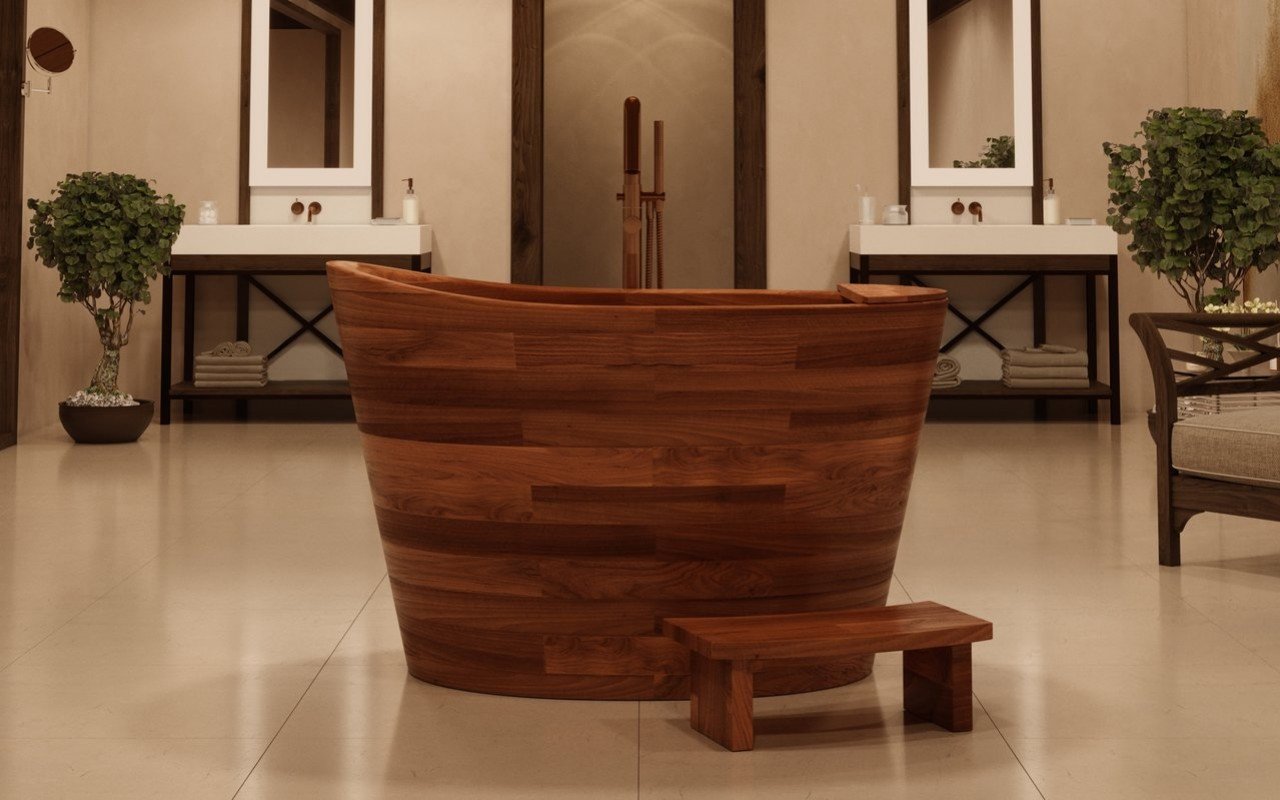
A bathroom stylized for Japan should have simple lines and shapes, a neutral color scheme.
Bath Tips
In the traditional Japanese interior, the bathtub is a key component of the decor, which is why it is placed in a prominent place. There are several ways to post:
- by the far wall on the podium;
- in the middle of the room (suitable for large rooms);
- in the corner (opposite you can install a shower);
- near the window.

Modern apartments, as a rule, have small bathrooms, but in the presence of desire and imagination it will not be difficult to beautifully and stylishly design a room.
The podium can also be installed in the center, which will also look stylish and in the spirit of Japan.
Japanese style is characterized by harmony and naturalness of forms and lines. It is conducive to relaxation and relaxation. In the oriental-style bathroom, you can truly enjoy peace and relaxation.
VIDEO: Japanese-style bathroom.









